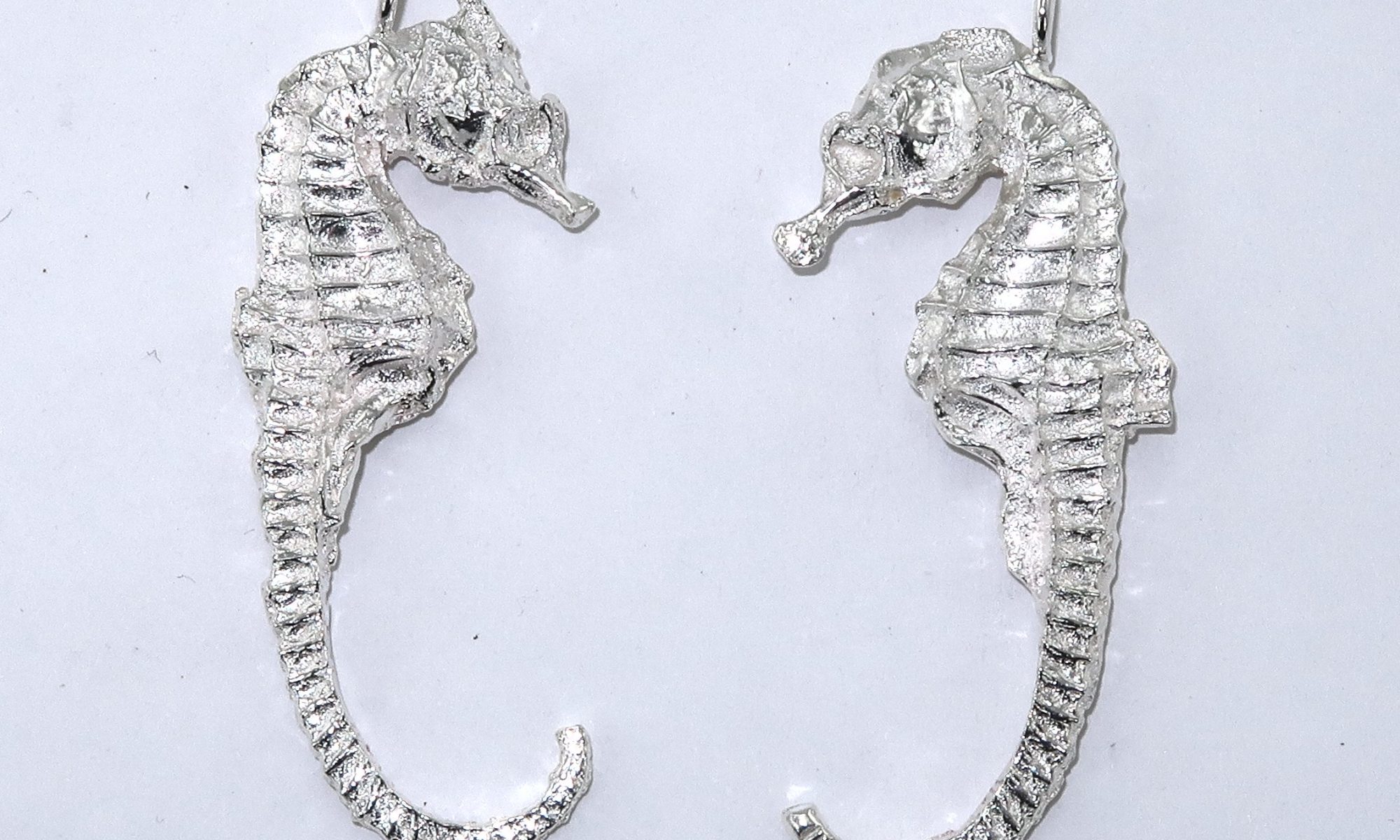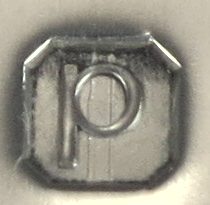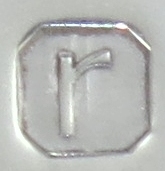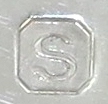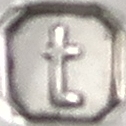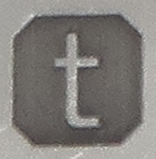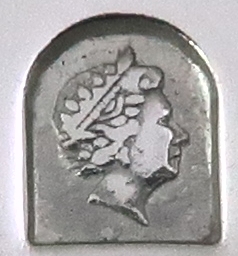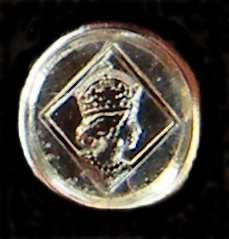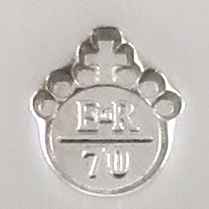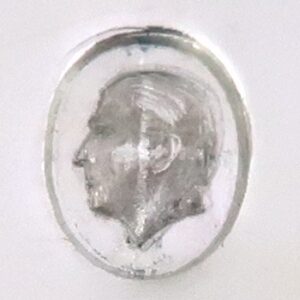What the marks mean |
||||||||||||||||||||||||||||||||||||||||||||||||||||||||
|
The full detail of what assay marks mean, when they are needed and what they look like can be found on the London Assay Office website. Also the dealer’s notice, which is a useful overview. My work is always marked with the traditional assay marks and when possible any special marks,. In my time as a silversmith, there have been five special marks – the millennium mark in 1999 and 2000, Queen Elizabeth II’s Golden Jubilee mark in 2002, Queen Elizabeth II’s Diamond Jubilee commemoration mark in 2011 and 2012, Queen Elizabeth II’s Platinum Jubilee mark in late 2021 and 2022 and King Charles III’s Coronation mark in 2023 and 2024. More detail on these below. |
||||||||||||||||||||||||||||||||||||||||||||||||||||||||
 |
||||||||||||||||||||||||||||||||||||||||||||||||||||||||
|
This box shows the full set of marks for 2000. From the bottom the marks are
In 2021, for the first time, I paid to have the Common Control Mark added to some work. This means that the quality of the metal will be recognised by twenty countries who have signed up to the relevant convention. 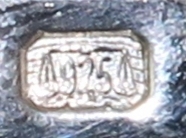 There is more detail on this at the London Assay Office website – link above. There is an example of a spanner with the six marks on my blog. |
||||||||||||||||||||||||||||||||||||||||||||||||||||||||
Date Letters |
||||||||||||||||||||||||||||||||||||||||||||||||||||||||
|
The date letter allows you to determine the date the piece was assayed. There is a 25 year cycle of letters. Generally ‘J’ is omitted from the cycle of letters. For 1983, the letter is considered to be an ornate ‘I’. For the cycle starting in 2000, it was decided that ‘i’ and ‘j’ were too similar as were ‘i’ and ‘l’, hence ‘j’ was used for 2008. Books such as ‘Bradbury’s Book of Hallmarks’, give full lists of date letters for all the UK Assay Offices. My first marked work was in 1979 – ‘e’. The images below are date letters from a series of ingots – I have made at least one every year since I registered my mark. I’ve been doing it for a while now – that’s why I’m on a second cycle of letters! For ‘T/t’ the third image is the laser version of the mark rather than the punch/ struck version. My latest (2024) is ‘Z’. Only another four years before I have two full cycles! |
||||||||||||||||||||||||||||||||||||||||||||||||||||||||
|
||||||||||||||||||||||||||||||||||||||||||||||||||||||||
Queen Elizabeth II’s Golden Jubilee Mark |
||||||||||||||||||||||||||||||||||||||||||||||||||||||||
|
In 2011 and 2012, an extra mark could have been applied to commemorate the Queen’s Diamond Jubilee. I have had some pieces so marked. The Jubilee mark is show above and depicts a young Queen Elizabeth with an oversized crown in a diamond surround. Queen Elizabeth II’s Platinum Jubilee markThis mark was intended to be applied from November 2021 to December 2022. It depicts an orb and is suggestive of the platinum hallmark. The mark remained available for that period notwithstanding the sad death of Her Majesty Queen Elizabeth II (the Great). King Charles III’s Coronation MarkThe mark to celebrate the Coronation of King Charles III is available from 1 March 2023 to 31 December 2024. This is one example from a recent commission. Getting silver assayedMy sponsor’s mark is registered at the London Assay Office (LAO) so I can only get work assayed there. It can be my work or that of anyone I care to sponsor (hence sponsor’s mark). The LAO have a list of charges for basic and supplementary services. Basically there is a fixed charge and a per item charge. The work has to be sent/ taken to the LAO and sent back/ collected. All silver sold must be assayed and hallmarked if it weighs above 7.78g. I like to have my work assayed even if it is less than that. To minimise the cost of assay across my clients, I aggregate my work to spread the fixed costs. So the timing of when the order is placed can be critical. The minimum turnaround time is three weeks, but it could be two months. I can always expedite my delivery by sending a special batch, but that would incur an additional charge of around £50 to cover the postage and the premium the Assay Office charge for rapid turnaround. Supplementary services by the LAO include display marks, very carefully applied marks for decorative effect, and simple engraving. For each batch, I have to declare the level at which the batch is to be stamped, 925, 958 or 999. If I send a 925 batch and I include some 999 silver pieces, they will only be marked as 925. Assay Offices only check the silver is at or above standard. They don’t analyse for silver content and mark accordingly. |
